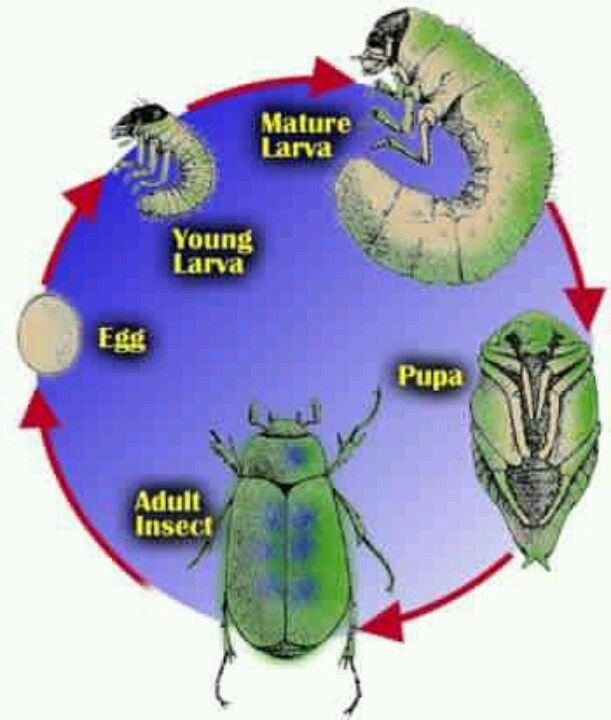
Understanding the grub worm lifecycle is essential, especially if you’re a gardener or just curious about the little critters in your yard. These creatures, often thought of as pests, play a significant role in the ecosystem. You might know them as larvae, and they’re typically the young stages of beetles, such as the Japanese beetle or the June beetle. Let’s dive into how these fascinating insects grow, develop, and eventually change into beetles.
The Egg Stage
Every great story begins with an egg, and the lifecycle of grub worms is no different. Female beetles lay their eggs in the soil, usually during late spring or early summer. The eggs are small, often white or yellowish, and look a bit like tiny pearls scattered in the dirt. You might be wondering how this tiny egg can lead to a beetle.
Once the eggs are laid, they take about two weeks to hatch. During this time, factors like moisture and temperature play a huge role in their development. If the conditions are just right—warm and moist—the eggs have a better chance of hatching successfully. If conditions are too dry or too cold, they might not survive. It’s like waiting for a seed to sprout; it needs the right environment to flourish.
Larva Stage: The Grub Phase
When the eggs hatch, out come the grubs. These larvae are legless, pale, and often curl up into a C-shape. They begin their life underground, where they munch on roots, decaying matter, and organic material. This is where they get their nourishment and grow. You could say they’re like teenagers raiding the fridge—always hungry and eager to eat!
Grubs have a voracious appetite and can do quite a bit of damage to lawns and gardens. They feed for several months, growing larger and shedding their skin multiple times, which is part of their growth process. Each time they shed, they allow themselves to grow bigger, almost like a snake shedding its skin. This phase usually lasts from late summer to early fall, making it a crucial time in their development.
Pupal Stage: The Transformation
After spending several months in the larval stage, grubs enter the pupal stage. This stage is like a secret transformation, where the grub goes into a sort of cocoon. It’s a bit like a caterpillar turning into a butterfly but less visually dramatic.
During this time, the grub is not just resting; it’s undergoing significant changes. Inside the pupa, it’s rearranging its body structure and preparing for its future life as a beetle. This stage can last anywhere from a few weeks to several months, depending on various factors like species and environmental conditions. It’s the calm before the storm, where everything is in flux.
The Adult Beetle Stage
Finally, the moment arrives: the grub has transformed into an adult beetle. This stage is where things get exciting! Emerging from the soil, the new beetle often has a soft exoskeleton, which gradually hardens. You might spot them in your garden, hopping around or feasting on leaves.
Adult beetles are responsible for reproduction, continuing the lifecycle. They often emerge in late spring or early summer, seeking mates and laying eggs of their own. It’s a full-circle moment, returning to where it all began. This is also when many gardeners start to notice them, sometimes with concern due to their potential to damage plants.
Factors Affecting the Lifecycle
Various factors influence the lifecycle of grub worms. Environmental conditions are at the top of the list. Temperature, moisture, and food availability can significantly affect their development. For instance, in a particularly dry season, they may not thrive as well.
Additionally, predation plays a role. Birds, other insects, and even rodents can eat grubs, limiting their population. You might see this as nature’s way of keeping balance, ensuring that not too many grubs turn into beetles and wreak havoc on gardens.
Here’s a quick look at what impacts their lifecycle:
- Temperature: Warmer weather speeds up growth.
- Moisture: Essential for the eggs and grubs to thrive.
- Food Supply: Abundant organic material means healthier grubs.
- Predators: Natural predators can reduce grub populations.
Why Understanding the Lifecycle Matters
Knowing the grub worm lifecycle is more than just a fun fact; it’s crucial for anyone interested in gardening or pest control. When you understand when these creatures are most active, you can take steps to protect your plants effectively.
For example, if you know that grubs are feeding in late summer, you can apply treatments or preventive measures before they become beetles. This knowledge helps you manage your garden better, reducing the likelihood of damage. It’s like having insider information that helps you make smarter decisions.
Managing Grub Worms in Your Garden
If you find yourself battling grubs in your garden, there are several strategies you can use to manage them. Natural methods are usually the best way to go.
– Beneficial Nematodes: These tiny roundworms seek out grubs and can help control their population.
– Companion Planting: Certain plants can deter beetles from laying eggs in your garden.
– Regular Monitoring: Keep an eye on the health of your plants and soil conditions to catch any issues early.
You might also consider using organic pesticides if the problem escalates, but be mindful of the potential impact on beneficial insects.
The lifecycle of grub worms is an incredible journey from egg to beetle, filled with stages of growth and transformation. By understanding this process, you gain insight into how to manage them effectively, ensuring your garden stays healthy and productive. Embracing the natural choreography of these creatures can enhance your gardening experience, making it a little easier to cultivate your green space. So, the next time you spot a grub, remember the amazing journey it’s on. Who knows, perhaps it’s just waiting for the right moment to bloom into something beautiful!

